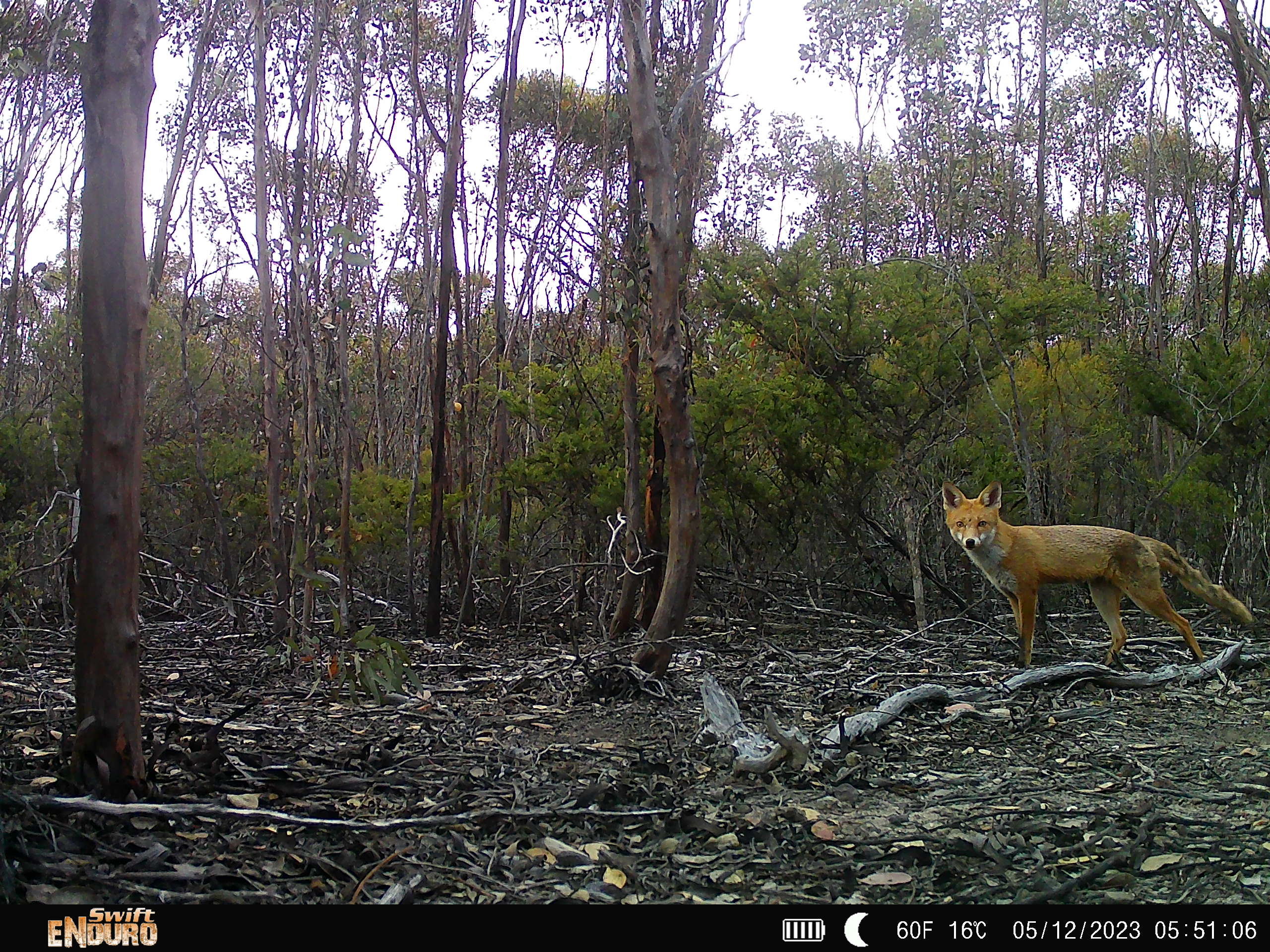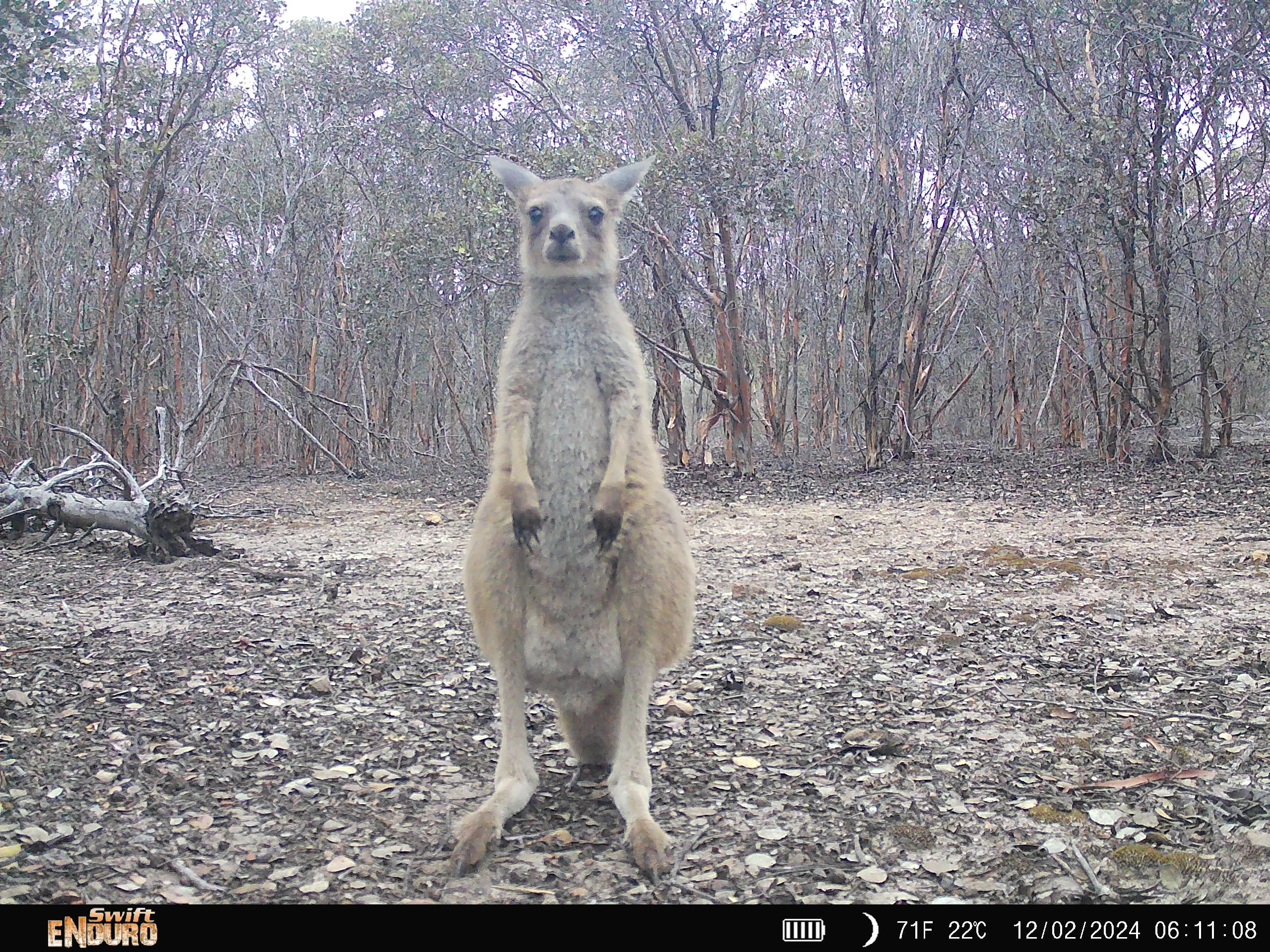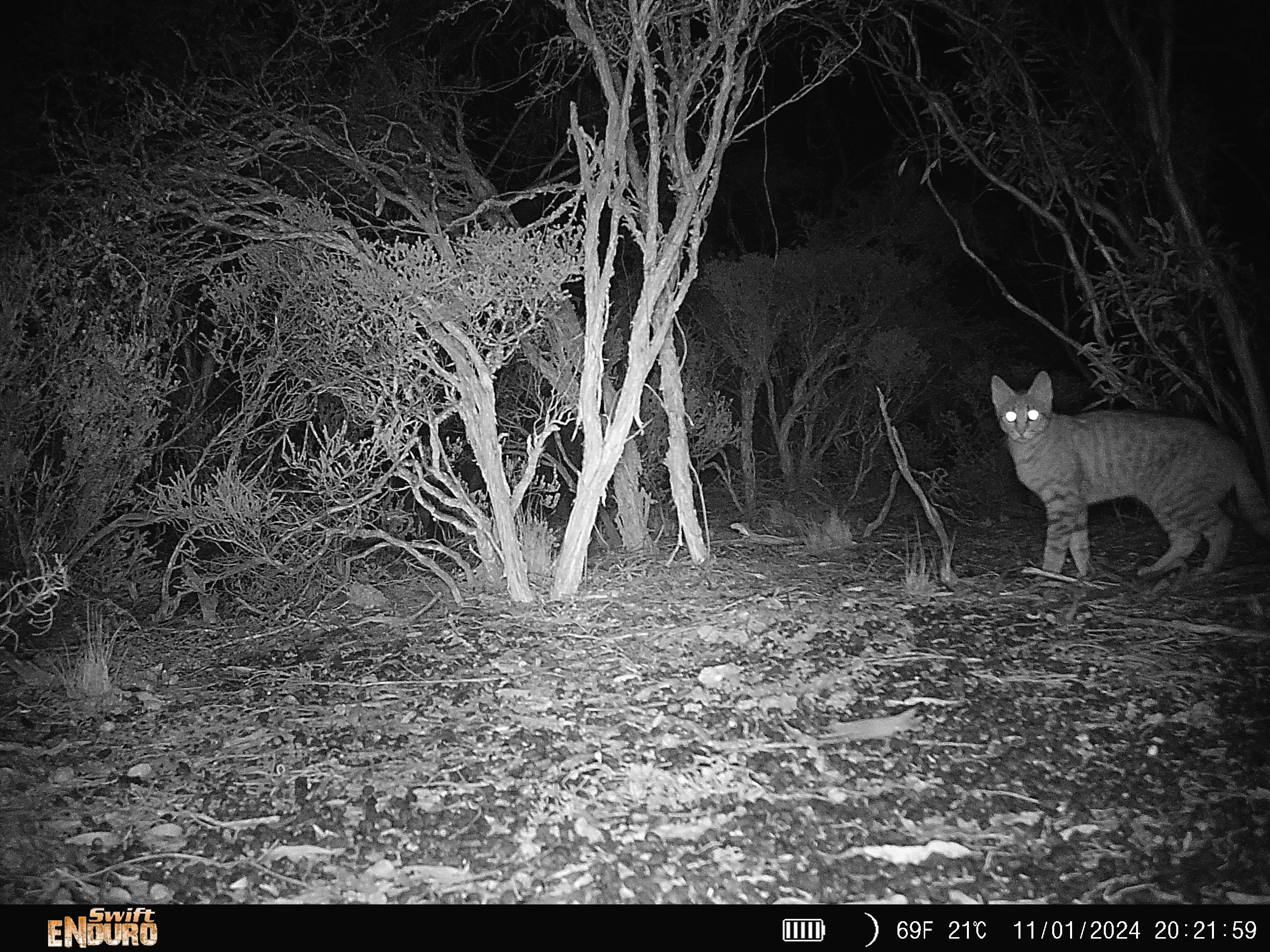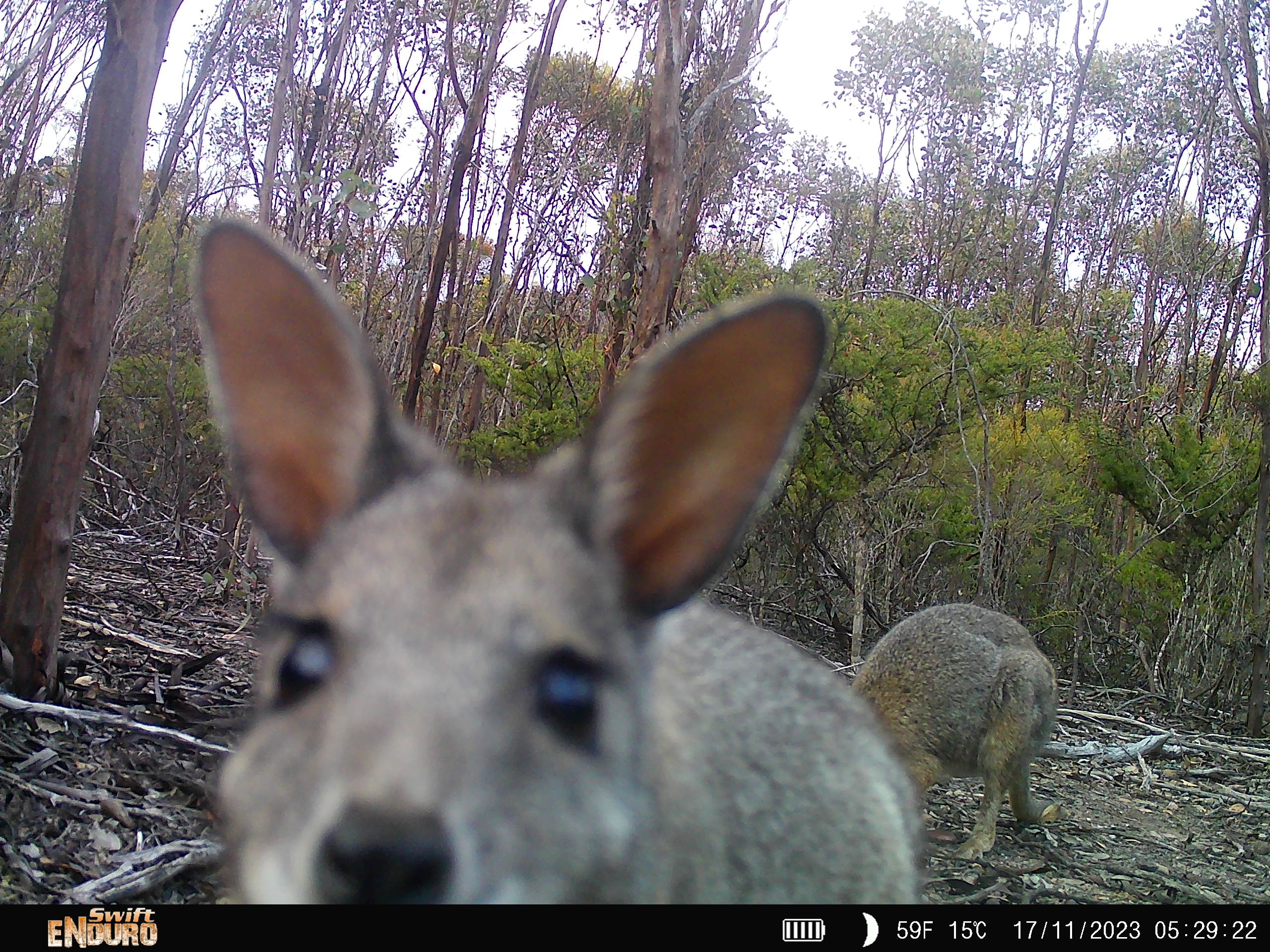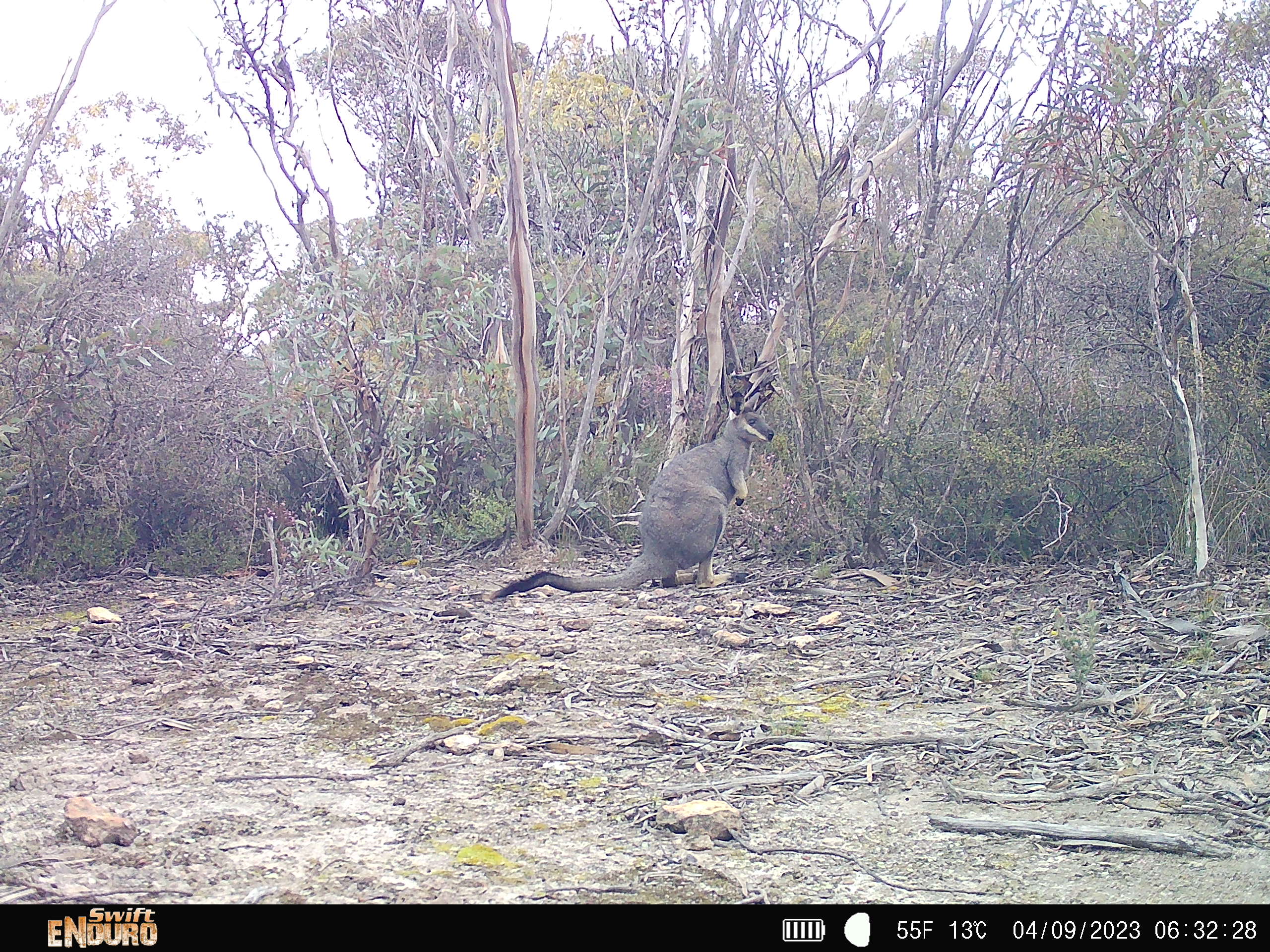taking strides in threatened species management,
After a huge year of integrated predator control, the Fitz-Stirling Fauna Recovery Project is now drawing to a close.
Extensive land clearing and predation from introduced foxes and cats have had a devastating impact on native wildlife in the South Coast region and beyond. Over the past year, South Coast NRM has been working alongside our partners – Bush Heritage Australia, Department of Biodiversity, Conservation and Attractions, North Stirlings Pallinup Natural Resources and Fitzgerald Biosphere Group, supported by the National Landcare Program – to reduce the threat of these introduced predators in two of our most vital wildlife corridors: the Stirling Range to Fitzgerald River National Park (Fitz-Stirling) corridor and the Two Peoples Bay to Fitzgerald River National Park Coastal (Coastal) corridor.
Through this community-supported program, the project partners aimed to protect and enhance populations of three priority species – the Western ground parrot, chuditch, and malleefowl. Foxes and cats were targeted using various methods, including baiting, trapping, shooting, and grooming traps. At the same time, wildlife was monitored using an extensive array of remote camera traps and autonomous recording units. The data is now being crunched to help us to better understand how our activities have impacted both feral predators and threatened species.
The Fitz-Stirling Fauna Recovery Project has built on over two decades of dedication from government, non-profit organisations, the community, and private landholders to conserve our threatened fauna in the two corridors. It covered 35,000 hectares in the Fitz-Stirling corridor and 9,500 hectares in Waychinicup National Park, which is at the heart of the coastal corridor.
This project is supported by South Coast NRM, through funding from the Australian Government’s National Landcare Program and forms part of the Supporting Communities Manage Pest Animals and Weeds Program, which supports actions in the Threatened Species Strategy (2021-2031) and its five-year Action Plan. We look forward to exploring new opportunities to continue this important work.

